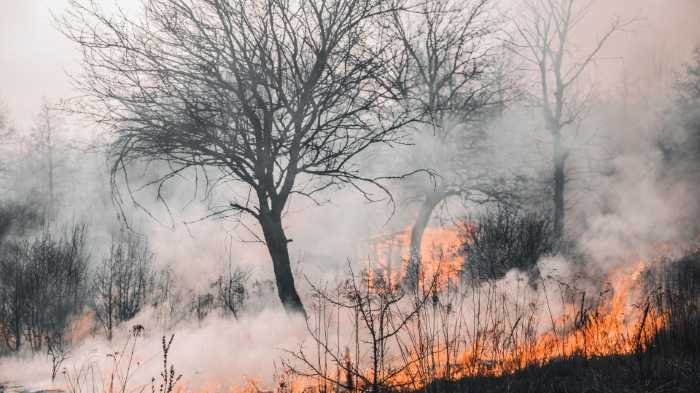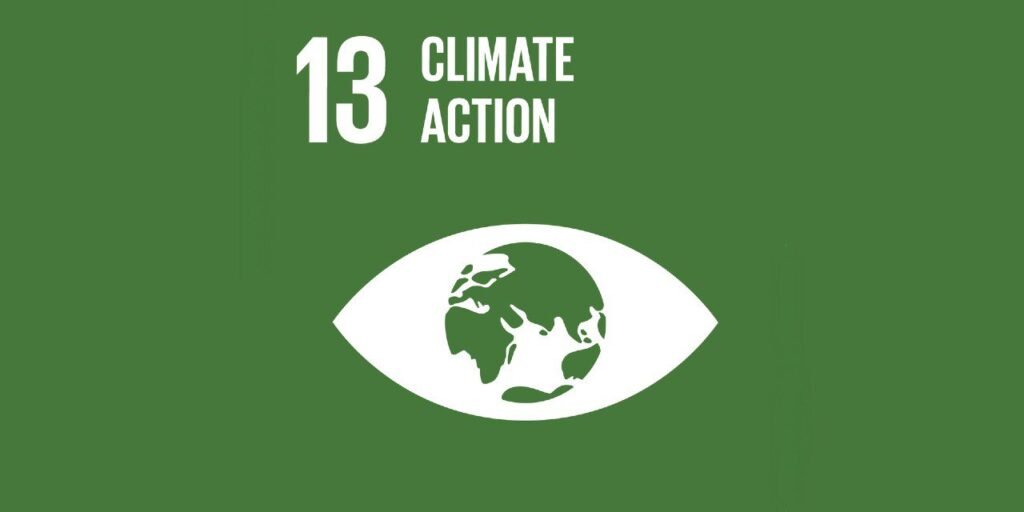
In 2015, the United Nations came together to adopt a set of 17 Sustainable Development Goals (SDGs) that would guide global development for the next 15 years. Goal number 13 is focused on climate action, and it is crucial for the success of all of the other sustainable development goals. In this blog post, we will discuss what SDG 13 means for us as individuals and businesses and explore ways in which we can work together to achieve its goals.
- What is SDG 13 & why is it important?
- How can businesses achieve SDG 13?
- How can individuals achieve SDG 13?
- What are the climate change-related hazards and natural disasters?
- What is the United Nations Framework Convention on Climate Change?
- FAQs
What is SDG 13 & why is it important?
SDG 13 is the United Nations Sustainable Development Goal for climate action. The motto is to take urgent action to combat climate change and its impacts. Climate change is a global challenge that requires a worldwide response. It threatens the health of the planet and its people, and it threatens the security of countries and economies. SDG 13 calls on countries to take action to reduce greenhouse gas emissions, adapt to climate change, and build resilience to its effects. The goal is important because climate change is one of the greatest challenges facing the world today. It is already having a major impact on people’s lives, and its effects are expected to become more severe in the future. Taking action on climate change is essential for protecting the planet and its people.
What are the goals of SDG 13?
SDG 13, or the Sustainable Development Goal for Climate Action, has three specific targets. The first is to take urgent action to combat climate change and its impacts. This includes reducing greenhouse gas emissions, increasing resilience to climate-related disasters, and promoting sustainable development.
The second target is to build sustainable communities capable of mitigating and adapting to climate change. This includes developing green infrastructure, improving air quality, and reducing the risk of natural disasters.
The third target is to ensure that economic development is environmentally sustainable. This means moving towards a low-carbon economy, protecting biodiversity, and using natural resources sustainably.
How can businesses achieve SDG 13?
Businesses have the power to make a significant impact on the environment and climate change. Goal 13 of the Sustainable Development Goals is specifically aimed at taking urgent action to combat climate change and its effects. Some simple measures include:
1. Reducing energy consumption
As businesses strive to reduce their impact on the environment, they are looking for ways to reduce energy consumption. One way to do this is to invest in energy-efficient equipment and technology. This can include anything from replacing old light bulbs with more efficient LEDs to upgrading to energy-efficient HVAC systems.
Another way to reduce energy consumption and address climate change is to implement measures that will help conserve energy, such as programming thermostats to automatically adjust temperature settings during periods of low occupancy or installing motion sensors that activate lights only when someone is in the room. By taking steps to reduce energy consumption, businesses can not only save money on their utility bills but also help to protect the environment.
2. Making energy efficiency a priority in all operations
One way businesses can work to mitigate climate change is by making energy efficiency a priority in all of their operations. This includes everything from the vehicles they use to the buildings they occupy. When it comes to vehicles, businesses can explore options like electric or hybrid vehicles, which have far lower emissions than gasoline-powered cars.
When it comes to buildings, businesses can make sure that they are well-insulated and that all other energy-efficiency boxes are ticked. By taking these steps, businesses can help to reduce their carbon footprint and play a role in mitigating climate change.
You can’t improve what you don’t measure.
Free Verified Carbon Calculators.
Erase Your Carbon Footprint in less than 5 Minutes
Personal Carbon Footprint Calculator
Business Carbon Footprint Calculator
3. Recycling and composting
Recycling and composting are two simple yet effective actions that businesses can take to mitigate climate change. Recycling helps to reduce the amount of waste that is sent to landfills, where it breaks down and releases methane, a powerful greenhouse gas.
Composting also helps to reduce methane emissions by diverting organic waste from landfills. In addition, compost can be used as a natural fertilizer, which helps to improve the efficiency of agricultural operations. As businesses strive to become more sustainable, recycling and composting are two important actions that can help to mitigate climate change.
4. Using green power sources
Renewable energy is becoming increasingly popular as businesses look for ways to reduce their environmental impact. One way to do this is by using green power sources, such as solar, wind, and hydropower. While the initial investment may be higher than traditional fossil fuels, renewable energy can save money in the long run.
In addition, it helps to protect the environment by reducing greenhouse gas emissions. Solar power is one of the most popular green power sources, and it can be used to generate electricity or heat water. Wind power is another option, and it can be used to generate electricity or pump water. Hydropower is often used to generate electricity, but it can also be used to provide irrigation for crops or to supply drinking water. By using green power sources, businesses can take a major step toward reducing their environmental impact.
5. Reforestation projects & Wetland conservation
Reforestation and wetland conservation projects can have a major impact on the environment, and businesses that choose to invest in them are helping to create a better future for our planet. Reforestation involves planting trees in areas where forests have been destroyed or degraded, and wetland conservation focuses on protecting and restoring natural wetlands.
There are many reasons why businesses might choose to invest in reforestation or wetland conservation projects. Trees and wetlands play an important role in regulating the climate, and they also provide habitats for wildlife. In addition, healthy forests and wetlands can help to prevent flooding and soil erosion.
6. Telecommuting
As the world continues to grapple with the effects of climate change, businesses are under increasing pressure to reduce their environmental impact. One way to do this is by promoting telecommuting, which can help to reduce emissions from employees commuting to and from work. Telecommuting also has a number of other benefits for businesses, such as reduced office costs and increased employee productivity.
In order to make telecommuting a success, businesses should implement policies and procedures that promote communication and collaboration among employees. They should also provide employees with the resources they need to be successful, such as access to video conferencing and file-sharing platforms. By taking action on climate change, businesses can not only help to protect the environment but also improve their bottom line.
7. Educating employees and customers about climate change
According to the Intergovernmental Panel on Climate Change, the world has until 2030 to take drastic action to prevent the most catastrophic effects of climate change. For businesses, this means reducing emissions, but it also means educating employees and customers about the issue. Many people are not aware of the severity of the problem or the steps they can take to help mitigate it.
As a result, businesses have a responsibility to raise awareness and provide resources that empower employees and consumers to make choices that reduce their carbon footprint. Some ways to do this include holding workshops and training sessions, developing educational materials, and integrating sustainability into marketing initiatives. By taking climate action, businesses can help create a more sustainable future for us all.
8. Supporting sustainable agriculture practices
Agricultural production accounts for a significant portion of global greenhouse gas emissions, making it an important area of focus for businesses looking to reduce their impact on the environment. There are a number of ways in which businesses can support sustainable agriculture practices, including investing in research and development, working with suppliers to improve practices, and advocating for policy change.
By taking these steps, businesses can help to promote more efficient and environmentally friendly agriculture, which can lead to reductions in greenhouse gas emissions. In addition, businesses can also support sustainable agriculture through their own operations, by using sustainable agricultural products, and by investing in regenerative agriculture practices. By taking action on this critical issue, businesses can play a role in climate change mitigation.
UN SDGs
9. Promote fair trade
Another way companies can work towards climate change mitigation is by promoting fair trade. Fairtrade is an arrangement in which products are produced and traded in a way that is ethical and sustainable. For example, fair-trade coffee is grown in conditions that protect the environment and the rights of workers. By supporting fair trade, businesses can help to ensure that products are produced in a way that benefits both people and the planet.
In addition, promoting fair trade can also help to build goodwill and customer loyalty. As more and more consumers become concerned about climate change, they are likely to seek out companies that are taking action to combat the problem. By promoting fair trade, businesses can show their commitment to sustainability and attract environmentally conscious consumers.
10. Using less water in all operations
According to the Environmental Protection Agency, water use in the United States has increased by 50 percent since 1970. As the population continues to grow and climate change creates new droughts and shortages, it is clear that this trend cannot continue. Businesses must take steps to conserve water in all aspects of their operations.
One way to do this is to install low-flow fixtures and water-efficient appliances. This can reduce water usage by as much as 30 percent. In addition, businesses should consider ways to reduce water waste in other areas, such as by using greywater for irrigation or preventing leaks. By taking these steps, businesses can help to preserve this essential resource for future generations.
11. Avoiding greenwashing
As businesses increasingly look for ways to embrace sustainable practices, it’s important to avoid greenwashing, socialwashing, rainbowwashing, etc. That is the deceptive marketing of products or services as environmentally or socially friendly when they are not. Unfortunately, greenwashing is all too common, and businesses that engage in it can damage their reputation and alienate consumers.
There are several ways to avoid greenwashing:
- First, be honest about your company’s environmental impact. If your claims about sustainability efforts are false or misleading, you’re likely to be caught eventually, and the fallout can be severe.
- Second, back up your claims with data. If you say that your company has reduced its carbon footprint, for example, provide evidence to support your claim.
- Third, don’t make exaggerated claims. Consumers are becoming increasingly savvy about greenwashing, and they’re quick to call out companies that overstate their sustainability credentials.
- Finally, don’t greenwash your entire business; focus on specific products or practices that are truly environmentally friendly.
By following these guidelines, businesses can avoid greenwashing and build trust with consumers.
12. Continuously strive to improve environmental performance
The most important way businesses can combat climate change is by continuously striving to improve their environmental performance. This can involve investing in more energy-efficient equipment, adopting green manufacturing processes, and implementing policies to reduce waste and emissions. By continually working to improve their environmental performance, businesses can make a significant contribution to combating climate change.
In addition, they can also set an example for other businesses and help to create a culture of sustainability. As more and more businesses adopt environmentally friendly practices, the collective impact will be significant. So, if you’re a business owner, don’t wait – start taking steps today to improve your company’s environmental performance.
How can individuals achieve SDG 13?

Climate change is one of the gravest challenges facing humanity today. Here are five ways individuals can take climate change measures:
1. Educate yourself about climate change and its causes
One simple way individuals can help mitigate climate change is by becoming informed about the issue and its causes. It is important to be aware of how climate change is affecting the world in order to make personal decisions that can help reduce emissions. There are a number of ways to educate oneself about climate change. Books, articles, films, and websites are all excellent sources of information. In addition, attending lectures or workshops on the topic can be very helpful. As more people become informed about climate change, the more likely it is that effective measures will be taken to mitigate its effects.
2. Advocate for strong government action on climate change
One of the most important things individuals can do to combat climate change is to advocate for strong government action. There are many ways to do this, including writing letters and emails, attending protests and rallies, and meeting with elected officials. It is important to make your voice heard on this issue, as governments are more likely to take action when they know that their constituents care about the issue.
Additionally, it is important to pressure businesses and corporations to do their part in combating climate change. Many businesses have already taken steps to reduce their carbon footprint, but there is still more that can be done. By advocating for strong action on climate change, individuals can play a pivotal role in combating this global problem.
3. Support businesses and organizations that are committed to combating climate change
There are a growing number of companies that are working to reduce their carbon footprint, and they need the support of consumers to help them make progress. When you choose to patronize businesses that are taking steps to be more environmentally friendly, you send a message that you support their efforts. This, in turn, encourages other businesses to do the same.
In addition to supporting businesses, you can also look for organizations that are working to raise awareness about climate change and promote sustainable living. By lending your support, you can help make a difference in the fight against climate change.
4. Make environmentally friendly choices in your everyday life
As the negative impacts of climate change become more and more apparent, it is essential that we all take measures to reduce our impact on the environment. There are many things that individuals can do to help, and one of the most important is to make environmentally friendly choices in our everyday lives. This can include simple things like recycling, using public transportation, and reducing energy consumption at home.
It also means making more conscious choices about the products we buy, such as opting for items with less packaging or choosing recycled materials over virgin resources. And finally, it means being mindful of our food choices and trying to eat less meat, which has a significant impact on greenhouse gas emissions. By making these small changes in our daily routines, we can collectively make a big difference in the fight against climate change.
5. Donate to or volunteer with organizations working to combat climate change
One way to help combat climate change is to donate to or volunteer with organizations working on the issue. There are many different types of organizations, so there is bound to be one that fits your interests and beliefs. Some organizations focus on policy changes, some on awareness and education, and others on direct action. Whatever your passion, there is sure to be an organization that could use your help. And remember, even a small donation can make a big difference. Every little bit helps when it comes to combating climate change.
What are the climate change-related hazards and natural disasters?

Climate change is already making the world a more dangerous place. As global temperatures rise, we are seeing more extreme weather events, such as heatwaves, hurricanes, and wildfires. These events can damage infrastructure, disrupt economies, and displace people from their homes. In addition, climate change is also increasing the spread of diseases as pests and pathogens move into new areas where they can thrive. As a result, it is essential to develop disaster risk management strategies that take climate change into account. By understanding the potential hazards and natural disasters that are associated with climate change, we can be better prepared to protect our communities and our way of life.
How has climate change impacted the global temperature rise?

Climate change has led to a rise in the global average temperature. This is largely caused by an increase in greenhouse gases such as carbon dioxide and methane in the atmosphere. These gases trap heat, causing the global temperature to rise. Since 1880, the average global temperature has increased by 0.08° degree Celsius per decade.
The Intergovernmental Panel on Climate Change (IPCC) projects that the global average temperature will increase by 1.5 degrees Celsius by 2050. This may not seem like a lot, but it would mean an increase in extreme weather events, droughts, and floods. It would also lead to a decrease in crop yields, which would impact food security. Climate change is a serious problem that must be addressed urgently.
What is the United Nations Framework Convention on Climate Change?

The United Nations Framework Convention on Climate Change (UNFCCC) is an international treaty with the ultimate goal of preventing dangerous human interference with the Earth’s climate. The Convention was adopted in 1992 and came into force in 1994. As of 2019, there are 196 Parties to the Convention.
The primary objective of the UNFCCC is to “stabilize greenhouse gas concentrations in the atmosphere at a level that would prevent dangerous human interference with the climate system.” The UNFCCC also promotes mechanisms for developed countries to assist developing countries in mitigation and adaptation activities.
Developed country parties to the United Nations Framework Convention on Climate Change have committed to taking action to reduce their greenhouse gas emissions and to providing financial and technical assistance to developing countries to help them do the same. These commitments are known as “commitments undertaken by developed country Parties.”
What is the Green Climate Fund & how does it help integrate climate change measures?

The Green Climate Fund (GCF) is a fund established within the framework of the United Nations Framework Convention on Climate Change (UNFCCC), with the purpose of making a significant and ambitious contribution to the global efforts toward attaining the goals set in the Paris Agreement. The Green Climate Fund was created to help developing countries reduce their greenhouse gas emissions and adapt to climate change. It does this by providing financing for projects, programs, policies, and other activities that aim to achieve low-emission and climate-resilient development.
In order to be eligible for GCF funding, countries must submit national climate plans, which detail how they intend to reduce emissions and adapt to climate change. These plans are submitted to the UNFCCC secretariat and are reviewed by a panel of experts. If a country’s plan is found to be in line with the GCF’s objectives, it can then access financing from the Green Climate Fund.
The GCF is important because it provides a way for developed countries to help fund climate change mitigation and adaptation measures in developing countries. This is important because, although all countries are affected by climate change, developed countries have been emitting greenhouse gases for much longer and are therefore more responsible for the current situation. In addition, developing countries often lack the financial resources to address climate change on their own.
Conclusion
Climate change is a serious problem that must be addressed urgently. In order to address climate change, we need to take action on both the individual and organizational levels. The United Nations Framework Convention on Climate Change provides an important framework for international cooperation in this area. The Green Climate Fund helps finance projects that reduce greenhouse gas emissions and adapt to climate change in developing countries. Taking action on climate change is essential to protecting our planet and ensuring a sustainable future for all.
FAQs

What are the climate change-related hazards?
Climate change is causing an increase in the frequency and severity of both natural hazards and natural disasters. Some of the most common climate-related hazards include floods, hurricanes, and wildfires. As the Earth’s atmosphere continues to warm, these events are likely to become even more frequent and destructive. Additionally, climate change is also causing changes in patterns of precipitation, which can lead to droughts and famine. In order to protect people and property from these dangers, it is important to develop a comprehensive plan for dealing with climate-related hazards.
How is climate change affecting the local and marginalized communities?
Climate change is already affecting the local and marginalized communities that are struggling to adapt to its impacts. With natural climate change, national economies are also at risk as the global economy begins to experience primary impacts. Limiting global warming and thus its impacts require urgent and concerted international action to reduce greenhouse gas emissions and build resilience. Global climate finance is a critical part of this effort, as it helps local and marginalized communities adapt to the changing climate. Climate change will continue to impact the most vulnerable among us unless we take urgent action to limit it.
How can developed countries help small island developing states combat climate change?
Commitments undertaken by developed countries under sustainable development goals can also help to promote mechanisms that will assist small island developing states in adapting to climate change. These commitments include providing financial assistance and transferring technology. Overall, there are many things that people can do to mitigate climate change and its impacts.
How can individuals use their human and institutional capacity to fight climate change?
Individuals can work on increasing their human and institutional capacity to adapt to climate change. This includes developing early warning systems and disaster risk reduction plans. By taking these climate change measures, people can help to reduce the negative impacts of climate change.
You may also want to read What is SDG and ESG?
You might also read What are SDGs Companies?

Dean Emerick is a curator on sustainability issues with ESG The Report, an online resource for SMEs and Investment professionals focusing on ESG principles. Their primary goal is to help middle-market companies automate Impact Reporting with ESG Software. Leveraging the power of AI, machine learning, and AWS to transition to a sustainable business model. Serving clients in the United States, Canada, UK, Europe, and the global community. If you want to get started, don’t forget to Get the Checklist! ✅
